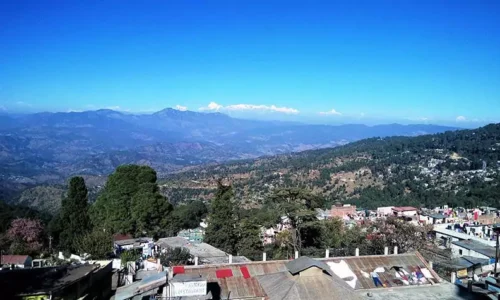
A Glimpse of Chopta
Mini Switzerland, Chopta is a small settlement and an unspoiled natural destination, which is still unexplored by travellers, surrounded by the forest of pine, deodar and rhododendron lying in the lap of the Uttarakhand Himalayas. The morning view from Chopta is rejuvenating when the crimson rays of the sun kiss the snow-clad Himalayas.
It is a beautiful hill station with superb treks and trails cutting through jungles and grassland. Tungnath, Devriyatal and Chandrashila are the best-known trekking routes in the Chopta region. Because of the abundance of birds, Chopta is becoming popular among birdwatchers.
Explore More about Chopta
The hill town of Chopta is also known as “Mini Switzerland”, perched at an elevation of 2680 m., in the Rudraprayag district of Uttarakhand. It is surrounded by dense forest and offers a view of the majestic snow-clad Himalayan range, including Trishul, Nanda Devi and Chaukhamba.
Chopta is the epicentre of all Panch Kedar (famous Shiva temples), two on the right side – “Rudranath and Kalpeshwar”, two on the left side – “Kedarnath and Madmaheshwar” and one is at the top of Chopta – “Tungnath”, which is the highest Shiva Temple in the world.
Best Things to do in Chopta
- Trekking – The Chopta – Tungnath – Chandrashila trek is quite popular among the trekkers in Chopta region. It takes you through the grassland and covers some of the best views of nature’s beauty. Chandrashila – One can reach Chandrashila by trekking a little more than 1km from Tungnath. It is located at an astonishing elevation of 4090 m. There is a 360-degree panoramic view of the majestic Himalayas from Chandrashila. It is also the highest point of the mountain on which Chopta and Tungnath Temple are situated.
- Bird Watching – Bird watchers can enjoy the enchanting of rare Himalayan species of monal birds.
- Get Connected – One can reconnect with nature as well as connect with the villagers of Chopta to know more about their lifestyle, culture, customs and traditions.
- Tungnath Temple – Visit Tungnath temple, the highest temple of Lord Shiva in the world at an elevation of 3680 m above sea level. The trek to the Tungnath Temple begins from Chopta. A short and easy 4km trek to Tungnath temple is worth the time.
Trip Planning
Best Time to Visit Chopta
Summer (March-May) – It is the best time to visit Chopta due to its pleasant weather. It has a maximum temperature of 30 degrees Celcius and a minimum temperature of around 10 degrees Celcius.
Monsoon (July–September) – Moderate amount of rainfall during these months in the region of Chopta. Monsoon in this region makes the weather pleasant. One should carry adequate rain gear during the trip to Chopta.
Winter (November–February) – Winter in Binsar is brisk cold, with a maximum temperature of 15 degrees Celcius and a minimum temperature of around -5 degrees Celcius. Visiting Chopta during winter time is not advisable, as trekking routes will all be cut off.
Things to carry for Chopta
In terms of things to carry, it is advisable to pack sunscreen and some light cotton clothes during the summer period. Also, carry adequate rain gear as the climate changes frequently in hilly areas.
How to reach Chopta?
By Air – The nearest airport to Chopta is The Jolly Grand Airport, which lies in the city of Dehradun at a distance of 220 km. Flights to The Jolly Grand Airport fly daily from Delhi.
By Rail – Rishikesh is the nearest railhead to Chopta, located around 200 km. Express Trains pass regularly to the town from different tourist destinations. The remaining distance is then covered by road.
By Road – Buses and Taxis are well connected by roads to popular cities in the state like Rishikesh, Rudraprayag, Gaurikund, Uttarkashi and Pauri.
Why Chopta should be on the Bucket List?
- Chopta is one of those travel destinations that remain unexplored from the major tourist circuit.
- For nature lovers and trekking enthusiasts, Chopta is a must-visit
- It is full of green meadows and surrounded by mighty Himalayan ranges.
- Chopta is the best place on Earth for experiencing trekking, camping, yoga and survival activities.
- Photographers can enjoy taking photos of rare Himalayan species of monal bird, musk deer and other flora and fauna species.




